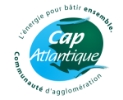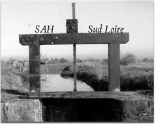Biology / ecology
The Tolypella salina is a plant species from the Characeae family, a group of so-called “advanced” algae. Characeae form dense aquatic meadows observed in both fresh and salt water.
Small, slightly branched, rather dark green to brownish in color, it is small, about ten centimeters at most.
The Tolypella salina is an annual vernal plant in the sense that it germinates in the fall and fruits in late winter and early spring, forming orange clusters containing the “seeds”. Rather pioneer, it is strictly affiliated with salt water, even hypersaline undergoing a progressive drop in salinity by the rains. This almost total desalination of water is necessary for the fruiting of the species. It can be associated with other characeae, algae and aquatic plants tolerating these very restrictive conditions.
It develops in abandoned salt / salt marshes or much more rarely in salt works exploited according to the intervention schedule of the salt worker / salt worker, in particular during the “dressing” of the marsh at the end of winter.
Protection and conservation status
The Tolypella salina is protected at national level.
Despite its very unfavorable conservation status, and its high heritage value, the Tolypella salina is not included in the Habitats Faune Flora directive.
Distribution and status of populations on Natura 2000 sites
Its discovery is recent and its distribution is very limited, in France and Spain according to the state of current knowledge.
In Pays-de-la-Loire, several observations have been made since the 2010s, notably on the marshes of Guérande, Ile de Noirmoutier and Millac.
The distribution of Tolypella salina is undoubtedly not well known within the Natura 2000 sites of LIFE Sallina. Indeed, its development is linked to very specific salinity conditions that are still poorly understood. Its germination does not necessarily take place every year. Spores stored in vases, on the other hand, have a lifespan of several years and are only expressed when conditions allow.
Conservation objectives / threats / actions planned in LIFE
The saltwater Tolypella meadows are one of the facies of lagoon habitat; conserving it conserves the diversity of this habitat.
The main factor for the conservation of Tolypella salina is the maintenance of shallow lagoon habitats with a functioning close to natural environments, with over-salting in summer and desalting in winter and early spring.
Its presence in the saltworks, sometimes in the carnations, can be considered as binding when dressing the marsh. Its conservation therefore requires a particular approach on the part of the salt worker or the salt worker to give the species time to complete its life cycle and reproduce; the artisanal exploitation of salt thereafter does not seem to be incompatible with its maintenance.
On the Noirmoutier pilot sites, certain marshes will be dedicated to saliculture; a partnership will be established with the operator to define the appropriate management methods for the Saline Tolypella.
In order to improve knowledge on the conditions necessary (salinity, water depth, substrate, pH etc.) for the development of Tolypella salina and other brackish seagrass, a study is being carried out on the salt marshes of Guérande and from Mès.
In addition, experiments will also be set up in certain basins belonging to the Conservatoire du Littoral in the town of Mesquer in order to test different methods of management and movement of the species. As Tolypella salina is protected, Cap Atlantique will request a derogation in order to be able to carry out these experiments.
The results of this study and of the experiments will make it possible to support the salt workers or salt workers confronted with the species in order to guarantee its maintenance in the exploited salines. These results will also be used to improve the management carried out on the basins restored by LIFE Sallina or other basins managed in favor of biodiversity.













